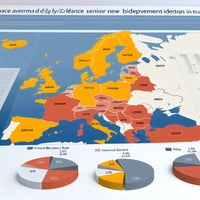Freelancing as a Senior Project Manager in Europe offers both flexibility and the potential for...
Europe’s Financial Infrastructure: The Hidden Frontline of a New Trade War
 The trade war between the US and Europe is no longer an abstract political standoff. It’s becoming a tangible threat—one that strikes at the very heart of our digital economy.
The trade war between the US and Europe is no longer an abstract political standoff. It’s becoming a tangible threat—one that strikes at the very heart of our digital economy.
While headlines focus on tariffs, sanctions, and stock market tremors, a deeper structural challenge is unfolding quietly beneath the surface: Europe’s deep reliance on foreign-owned payment systems and financial infrastructure.
Despite years of dialogue around "strategic autonomy," the reality remains unchanged: a significant share of Europe’s transactions still flows through systems built, owned, and governed outside the continent.
Consider the following:
-
Visa and Mastercard form the backbone of physical and digital payments.
-
PayPal, Apple Pay, and Google Pay dominate e-commerce and mobile wallets.
-
Embedded finance solutions—now crucial to modern fintech—are built on U.S.-based APIs like Stripe and Plaid.
These dependencies often go unnoticed—until they become instruments of strategic leverage.
Take Klarna’s recent decision to pause its U.S. IPO. This wasn’t just a business recalibration; it was a signal. As the lines between infrastructure and influence blur, financial plumbing is becoming a tool of power. U.S. banks are reportedly holding emergency discussions around systemic exposure. European firms are reevaluating their risk. And yet, the continent continues to lag in constructing its own resilient, independent digital backbone.
There are promising initiatives—Cartes Bancaires, iDEAL, and the upcoming EPI (wero) platform—but they remain fragmented. Progress is slow. And scale is elusive.
The future of finance won’t be built solely on cards. We’re entering an era of embedded finance, API-native banking, programmable money, and stablecoins. But without sovereignty over the infrastructure underpinning these innovations, Europe risks becoming a guest in someone else’s system.
So, ask yourself:
What happens if Europe is suddenly cut off from U.S.-based payment schemes?
What’s the impact on e-commerce, retail, and cross-border trade?
What would it cost if our financial infrastructure became a geopolitical pressure point?
At Grant & Graham, we’re helping companies and institutions prepare for this new reality:
-
Redesigning payment strategies to reduce risk.
-
Mapping out technological dependencies.
-
Implementing embedded financial solutions built on sovereign foundations.
Infrastructure is never neutral.
And payments are no longer just transactions—they represent power, direction, and strategy.
It’s time to wake up. | It’s time to build.




